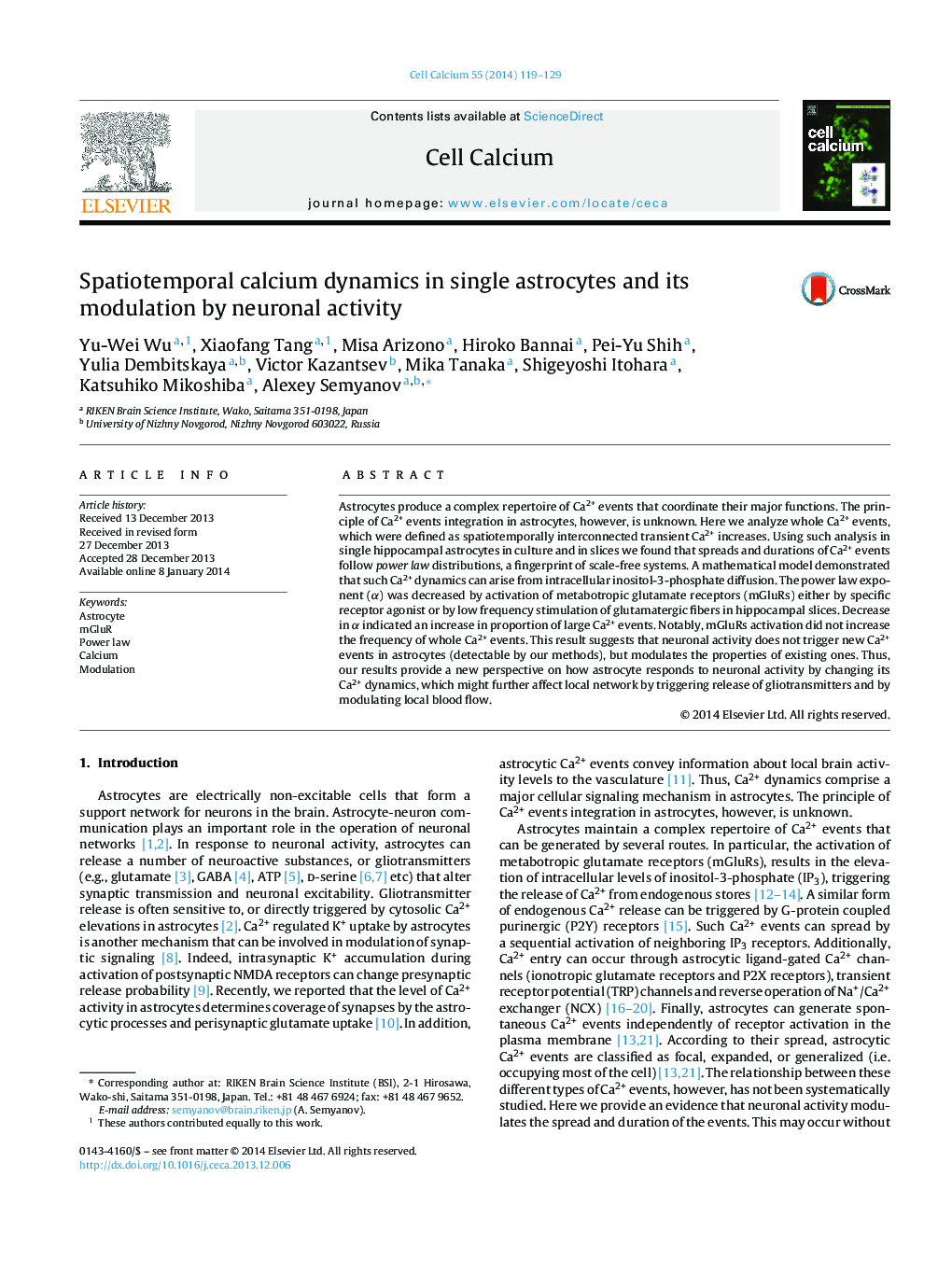| Article ID | Journal | Published Year | Pages | File Type |
|---|---|---|---|---|
| 2166030 | Cell Calcium | 2014 | 11 Pages |
Abstract
Astrocytes produce a complex repertoire of Ca2+ events that coordinate their major functions. The principle of Ca2+ events integration in astrocytes, however, is unknown. Here we analyze whole Ca2+ events, which were defined as spatiotemporally interconnected transient Ca2+ increases. Using such analysis in single hippocampal astrocytes in culture and in slices we found that spreads and durations of Ca2+ events follow power law distributions, a fingerprint of scale-free systems. A mathematical model demonstrated that such Ca2+ dynamics can arise from intracellular inositol-3-phosphate diffusion. The power law exponent (α) was decreased by activation of metabotropic glutamate receptors (mGluRs) either by specific receptor agonist or by low frequency stimulation of glutamatergic fibers in hippocampal slices. Decrease in α indicated an increase in proportion of large Ca2+ events. Notably, mGluRs activation did not increase the frequency of whole Ca2+ events. This result suggests that neuronal activity does not trigger new Ca2+ events in astrocytes (detectable by our methods), but modulates the properties of existing ones. Thus, our results provide a new perspective on how astrocyte responds to neuronal activity by changing its Ca2+ dynamics, which might further affect local network by triggering release of gliotransmitters and by modulating local blood flow.
Related Topics
Life Sciences
Biochemistry, Genetics and Molecular Biology
Cell Biology
Authors
Yu-Wei Wu, Xiaofang Tang, Misa Arizono, Hiroko Bannai, Pei-Yu Shih, Yulia Dembitskaya, Victor Kazantsev, Mika Tanaka, Shigeyoshi Itohara, Katsuhiko Mikoshiba, Alexey Semyanov,
